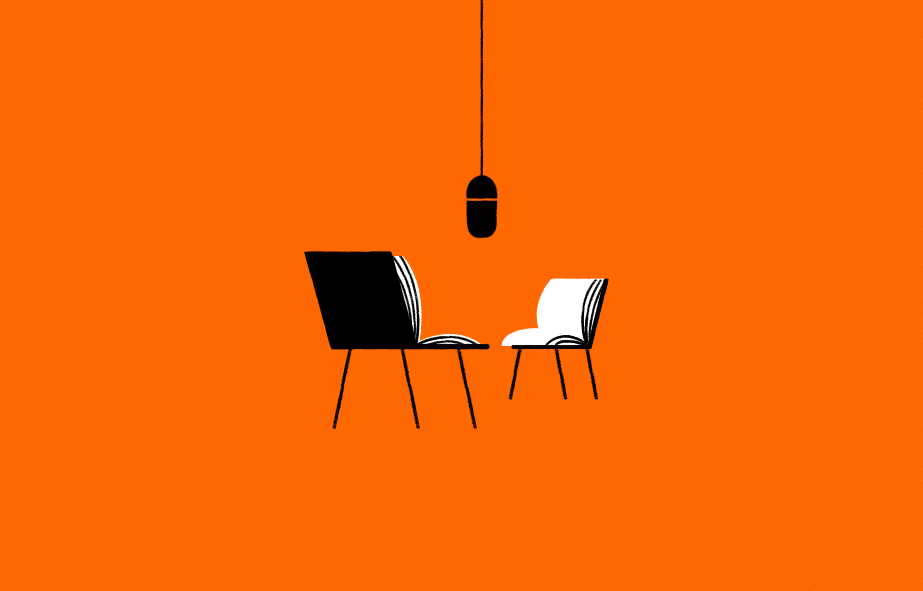- Collected
- Article
Haunted By A Vanished Building
Traces of the past

- 19 July, 2021
- Tamar Yellin
It began with a photograph. I suppose there must be a trigger point for the writing of any novel, and this was mine: the grainy, black-and-white image of a massive building, festooned in turrets and battlements, busy with chimneys, a grand castellated entrance protruding from its centre. The caption read: ‘Ben Rhydding in its final layout, early C20th’.
Perhaps it was the knowledge that the place no longer existed that added to its eerie power. The vanished past has always fascinated me. Yet there was something particularly compelling about this lost gem of Victorian Gothic architecture. Grim, sprawling, sinister, it sent a chill down my spine and, though I don’t really believe in ghosts, it said to me: haunted. I knew right then that I had to write about it.
Ironic that a haven of healing and restoration should look so ominous to our modern eyes. For Ben Rhydding was originally a hydropathic establishment, opened in 1844 for the provision of the water cure. This place had once welcomed the sick, the liverish, the nervous and the simply exhausted middle classes of the nineteenth century and promised them hope.
The healing properties of natural springs have been recognised since pagan times, and any reader of Jane Austen will be familiar with ‘taking the waters’. The Victorians, however, carried the water cure to a new level. It acquired a lore and equipment entirely of its own. For a few decades it became the alternative treatment of choice for fashionable and notable people from Dickens to Darwin.
It had all begun with a Silesian farmer’s son, Vincent Priessnitz, the ‘Water Demon’ of Grӓfenberg, who after observing the behaviour of certain animals, healed himself of a near-fatal injury by wrapping his torso in wet bandages. His spa, to which thousands of patients eventually flocked every year, became famous throughout Europe and was frequented by monarchs, dukes and duchesses, and Nikolai Gogol.
Soon hydros began to spring up across England and Scotland. Priessnitz’s cold water regime was considered too harsh by the practitioners who adapted his methods for the British market. These advertised the ‘gentle form’ of the cure, but it still sounds pretty Spartan to our ears. Patients were up at five for wet-sheetings and cold immersions; they were subjected to the rain box, in which water jetted at them from all sides, and the high douche, from which it rained down upon them with the force of rocks. There was the sitz bath to act as a stimulant, and the head bath to soothe an over-active brain. Hot and cold compresses, vapour baths and plunge baths, wet sheet envelopes and dry packs were prescribed according to an arcane science, the idea being that, upon the patient reaching a ‘crisis’, ‘morbid matter’ would be expelled from the blood via pustules on the skin. Food was simple, water the only beverage, fresh air and vigorous exercise encouraged. Reputedly, hydropathy could cure anything from cancer to consumption, but what many of its acolytes really seemed to need therapy for was the industrial era itself.
There were personal reasons why I, a citizen of the yet more complicated and anxious digital age, became fascinated by the water cure. Around the time that I began to research hydropathy, I was on a battery of medication for chronic pain. I had already suffered for years with undiagnosed endometriosis and had more than once been persuaded that my pains were psychosomatic. Eventually I resorted to surgery, which left me worse off. Over time I would try acupuncture, hypnotherapy, reflexology, emotional freedom techniques, herbal remedies and special diets. I disappeared down the rabbit-hole of online forums; I tasted despair. I truly empathised with those poor sufferers whose unstrung and aching nerves had brought them to Ben Rhydding to be scrubbed, pummelled, laved and purified back to health. In fact, the only time I felt relief was when I swam.
There was no adherent of the water religion more fervent than John Smedley of Matlock, a mill owner who enlisted his workers into rigorous Christianity and a free hydropathic health scheme. The working day began with prayers; illness and injury were treated according to his self-penned bible, Practical Hydropathy. Eventually he would establish his own hydro at Matlock Bath and run it alongside his wife Caroline. It was Smedley who built another landmark that came to haunt my novel: the foursquare mansion that still dominates the Matlock skyline, Riber Castle, a.k.a. ‘Smedley’s Folly’. This melded with Ben Rhydding in my writerly imagination, their histories combining to form the backbone of my novel. The Rhyddings traces the life of a hydro from its erection in the 1840s to its demolition a hundred years later.
The water craze, which reached its peak in the 1860s, was in rapid decline by 1883. There were too many charlatans at work; some questionable deaths and two scandalous murder cases hastened its demise. Ben Rhydding gradually acquired more of the appurtenances of a hotel, even – horrors! – a bar, and in 1885 a golf course. From then on, its life as a hydropathic spa was at an end. It was transformed into a ‘golf hotel’.
I loved portraying The Rhyddings in the 1890s: the era of Oscar Wilde, Bertie, Prince of Wales, Ascot ties, wasp-waists and spiritualism. Since my invented building was by now haunted, I resolved to have my characters hold a séance. I schooled myself in apports, ectoplasm and spirit trumpets, and studied the careers of such famous mediums as Eusapia Palladino. There would be golf, too. The late nineteenth century was the era of the golf boom: fifty courses in England in 1887 swelled to over a thousand by 1914. The golf course is all that now remains of the fabulous facilities at Ben Rhydding, which eventually included a gymnasium, American bowling alley, tennis and squash courts and seventy-seven acres of grounds and pleasure gardens.
Come the early twentieth century, and the history of Ben Rhydding grows hazy for a while. I turned to Riber Castle for inspiration and had The Rhyddings convert into a boys’ school. After John Smedley’s death in 1874 his widow rattled around at Riber until 1892; after that, nobody seemed to want the place, which was incredibly draughty and cold. The small boys who eventually came to be educated there under the eye of the Reverend J. W. Chippett attested as much. There were up to twenty boarders with one bath between them, but the classrooms still had fancy wallpapers and magnificent chandeliers. Much of the building was empty and unused. The turret rooms were spooky, and out of bounds; and there was one room nobody wanted to enter alone or after dark, because it was haunted. There is one turret in The Rhyddings which is similarly atmospheric…
The 1930s depression spelt the demise of most small preparatory schools, including that at Riber. It is then that my fictional building realigns itself with Ben Rhydding, which by 1938 had been transformed into luxury apartments. An advertisement for the property boasts excellent cuisine, central heating, electric lighting and a passenger lift, along with garaging for fifty cars. Whether the turret rooms are to be avoided, it does not state, but by now, both Ben Rhydding and its imaginary counterpart seem to lie under a curse. The building was requisitioned by the Government when the Second World War broke out and its residents evicted on forty-eight hours’ notice.
After the war Ben Rhydding stood empty for several years. Riber Castle, meanwhile, which had been used as a storage depot by the MOD, was also abandoned. This is where the two buildings coalesce, both in reality and fiction: both fall into ruin.
I cannot think of the vast pile of Ben Rhydding, abandoned, empty and decayed, without a shudder. Did the tink of Victorian water pipes, the shrieks of hydropathic patients, ecstatic under the high douche, still sound in the deeps of the night? Where did all those ghosts go, once the wrecking gang got to work?
In a small park called the Canker Well is a mossed-up marble bath, one of the few surviving relics of the old hydro, along with the lodge, the golf course and a pair of impressive gateposts leading nowhere. The inscription reads: ‘In honour of Vincent Priessnitz, the Silesian peasant to whom the world is indebted for the blessing of the system of cure by cold water, this fountain is gratefully erected and inscribed by Hamer Stansfeld. Ben Rhydding, XXIX May MDCCCXLIV’.
The site of Ben Rhydding is now a housing estate. The building lives on only in photographs, and in the haunted pages of my imagination.
You might also like:
RLF Fellows’ News: May 2024
Publishing News RLF Fellow Tom Lee’s new book, The Bullet, his memoir about family and mental health, has recently been…
Her Majesty The Queen is announced as our new Royal Patron
To mark the first anniversary of Their Majesties’ Coronation, it has been announced Her Majesty The Queen will take on…
WritersMosaic & Jhalak launch The Review today
The first issue of The Review by WritersMosaic & Jhalak is out today. The Review is an editorially independent, 20-page…


